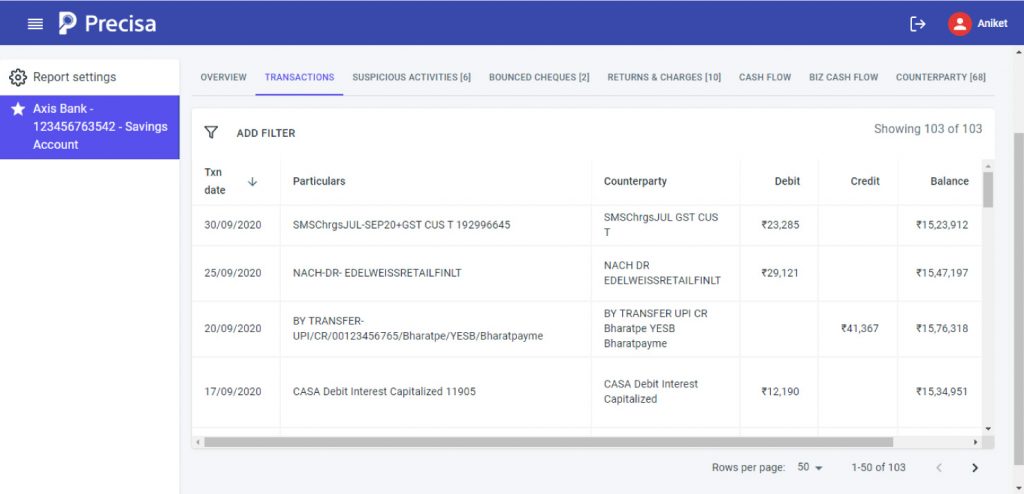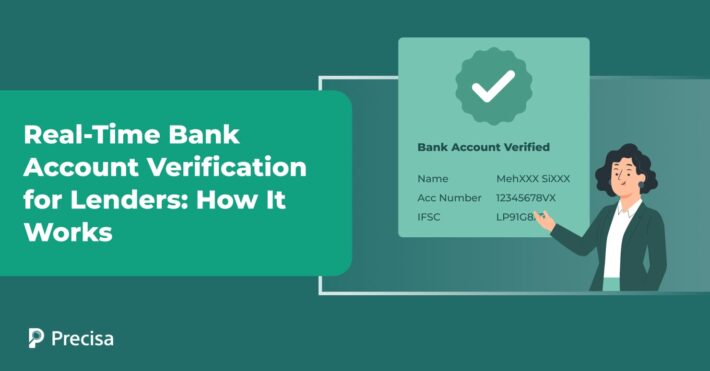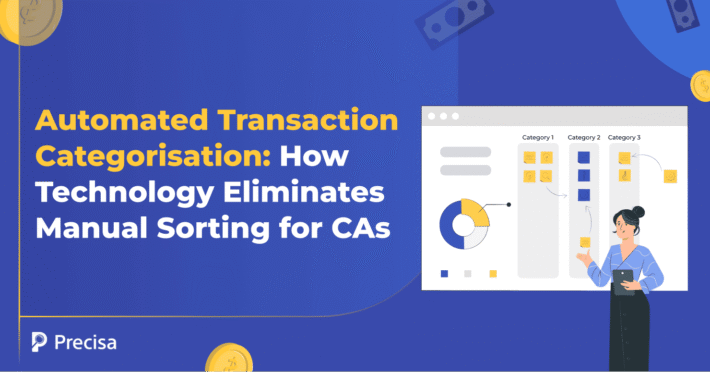How Do Mortgage Lenders Perform Bank Statement Analysis Digitally?

Mortgage loans and home loans, people often confuse the two. So, before we dive into digital bank statement analysis for mortgage lending, let’s shed some light on what it actually is.
A home loan is a loan you take to either purchase a property or to construct it. The property has to be residential. The bank or lender advances you the funds required to buy a house, which you later repay in varying EMI schemes.
Mortgage loans are loans against a property you already own. The property can be residential or commercial. You can utilise the loan amount for anything, from funding your child’s higher education to expanding your business. There are no restrictions on how you spend the money.
Moreover, anyone can take a mortgage loan – salaried people, self-employed individuals, etc. However, different mortgage lenders tend to have different loan conditions.
What is mortgage underwriting?
Mortgage underwriting is how a lender assesses if a borrower meets the loan criteria and whether they can repay the mortgage or not. Besides evaluating the borrower’s creditworthiness, it also determines how much mortgage they are eligible for.
During underwriting, the lender checks quite a few factors on your bank statement. For instance, they will look if you have a stable income. They’ll also judge if you have enough savings to keep paying the mortgage payments if you lose your job or face a financial emergency.
Another factor they keep an eye on is an unexplained influx of large cash amounts. They’re likely to question you on the source of the deposit. Overdrafts are one more critical element of bank statement analysis and often a reason for mortgage loan rejection.
Why use a digital bank statement analysis?
For both mortgage lenders and borrowers, the traditional underwriting process that includes manual verification and bank statement analysis is challenging. It is pitted with problems and risks.
For instance, manually hunting down the proper statements requires a lot of back and forth. It creates friction and drags the origination process. Moreover, parsing through dozens of relevant documents is laborious. So, it not only takes longer but also fails to add value to either party.
By digitising the account statements analysis, both the mortgage lender and borrower bypass most of the issues. There is no need to dig up documents and scrutinise them line by line for the borrower’s credit assessment. The entire process from statement upload to credit score happens automatically.
How does digital bank statement analysis work?
A bank statement analyser like Precisa is an easy-to-use web app. It allows lenders to access the bank statements of a borrower directly and in an organised way. But more than that, it offers actionable insights through an intuitive dashboard, using real-time data.
The safe, secure and convenient tool extracts financial data from bank statements. It sorts all the bank transactions into different categories and analyses them to spot anomalies and fraudulent activities. Finally, it assigns a score that validates the credibility of the borrower.
Let’s pick up use-cases to explain how such apps simplify and streamline the process.
1. Checking inward and outward fund flow
Before a lender can sanction a loan, one of the elements they appraise is outflow and inflow of funds of the borrower. Evaluating the same helps lenders draw necessary insights.
With a tool, it is as easy as clicking on the Report tab. You automatically get a detailed analysis of the bank account, within which one category is fund outflow/inflow.
From EMIs to bank charges, from utilities to cash withdrawal, every outflow of funds is displayed here. Similarly, the tab shows the inflow of funds, including cash flow, salary, new loans, etc.
Further, the app assigns a volatility score to the borrower. If the score is 0, it means the account is stable with consistent inflow and outflow. If the score is 1, it implies fluctuations with inconsistent inflow and outflow. Using the volatility score, mortgage lenders can better judge the borrower.
2. Pinpointing circular transactions
An overview of the inward and outward flow of funds is a fundamental step to calculating financial health. But more essential is detecting the back-and-forth of the same funds between separate bank accounts of the borrower. Precisa offers a circular transactions tab to measure just such fund flow.
2. Detecting suspicious activity
A significant step that a mortgage lender takes before sanctioning a loan is seeking out any suspicious activities in the bank account. For instance, have there been ATM withdrawals upwards of INR 20,000? Has the borrower deposited cheques on bank holidays? Is there a mismatch of statement and computed balance?
These activities can indicate the poor credibility of the borrower. Precisa automatically detects such dubious transactions and flags them for you. So, you don’t have to dive deep into bank statement analysis to look for them yourself.
3. Catching bounced cheques
Mortgage lenders also factor in bounced cheques during the underwriting process. With digital analysis, they don’t have to scrutinise hundreds of transactions. A bounced cheque tab would automatically show the particulars of all inward and outwards cheques with tags, cheque number, date, amount and balance. Thus, allowing the lender to reach an informed decision.
Switch to Digital Bank Statement Analysis Today!
Every mortgage lender knows that manual processes throw up more problems than they solve. Consequently, there are fewer return customers. Referrals are low and overall loyalty is abysmal.
Digital verification eliminates all these concerns. It modernises the process and eradicates friction. It speeds it up by reducing the time lenders spend on the underwriting process. Overall, borrowers move through the conversion funnel faster, helping profit margins.
More than speeding up the procedure, an automated process takes away the risk of any fraud. Manual verification often allows fraudulent cheques or suspicious deposits to fly under the radar because physical documents are unreliable and have ample room for mistakes. And where there is a risk of fraud, there is a higher risk of defaulters.
With an online bank statement analysis tool like Precisa, you get access to accurate, real-time information. Lenders, banks, or other financial institutions can utilise it to make data-backed decisions.
The tool has every security check you need built into it. It delivers a complete picture of the borrower from scanning bank statements in minutes to look for transactional patterns to a loan repayment probability score.
So, make the process of verifying the creditworthiness of your borrowers with our bank statement analysis engine hassle-free and cost-effective. Try out Precisa’s 14-day FREE trial!



